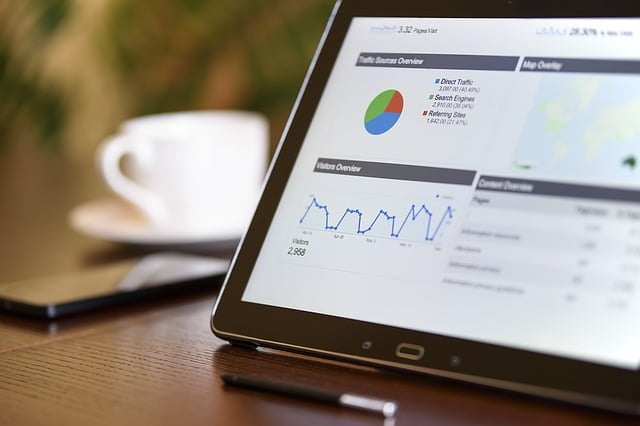Just a few years ago, internet marketing was focused on how to get more traffic to your website. If you had a conversion rate of 2% and 10,000 visitors a month, you’d end up with 200 conversions. But, if you doubled that traffic, you’d end up with 400 conversions. The more traffic, the more customers, right? Well, in theory, yes, but there’s much more to it than that now that we’ve seen so much competition come into play and we’ve learned more about the importance of user experience.

Photo-Mix / Pixabay
In the early days, it was easier to get more traffic – it was affordable and easy. But as everyone started doing it, the market became competitive, making it more expensive to drive more traffic. As such, people started focusing on improving the conversion rate of traffic they were already getting, rather than driving sheer volume and hoping for the best.
That’s how we ended up with both search engine optimization and conversion rate optimization. Both practices are essential to online marketing success today, but it leaves marketers faced with a tough decision: Is it more important to apply conversion rate optimization techniques, or focus on increasing traffic?
I’m here to tell you, for optimal results, it takes a strategy that includes both. But, if you had to choose one to work on first, which would it be? Chances are, the right answer is traffic, despite the fact that it’s not the popular answer these days.
What is Site Optimization?
This process involves making sure your site is easy for the search engine robots to find and index for the terms you are trying to rank for. There are things you can do on your website – referred to as “on-page” SEO, and things you can do off your website, referred to as “off-page” SEO.
On-Page SEO focuses on the various parts of your site that you have control over – that affect your rankings. These are things like your title tags, headings, URL structure, image ALT tags, page speed, page content, and internal linking structure.
Off-page SEO focuses on the elements of your website that you don’t have control over, but still influence ranking. This includes things like domain authority, number of domains linking to your site, number of links to your site, and so on.
It also involves split-testing, to see which version of your website your traffic responds to the best.
Let’s say you sell a $200 product, and you use Google AdWords as a main marketing channel You get 5,000 clicks a month, with an average cost per click of $4, so you’re spending $20,000/month in ads.
With split-testing, you send half your traffic to your original page, and half the traffic to a new and improved version of your page – that’s been improved upon. You have a better headline, clearer call to action, and so on.
After one month of testing, you find the old page has 100 conversions, but the new one has 120 conversions. Your conversion rate just went from 4% to 4.8%. Though it doesn’t seem like much, it’s actually a 20% increase in conversion rate.
Recommended for You
Webcast, October 19th: Triple Your Revenue Through Event Marketing
The next month, you get 240 conversions, instead of the usual 200. Those extra conversions are worth $8,000 more in revenue. Sounds awesome, right?
What is Traffic Optimization?
Traffic optimization involves making sure you’re sending the right kind of traffic to your website – and focuses on conversion rate optimization – or getting the highest possible amount of that traffic to convert. Conversion rate optimization and SEO have a lot to do with one another, and the secret lies in balancing the two so that more customers convert.
Now, let’s shift the focus to traffic. Without page testing, your conversion rate would have stayed at 4%, with 200 conversions out of 5,000 clicks, meaning 4,800 clicks didn’t convert. Why is that? Was it the landing page? Or was it something wrong with the traffic itself?
In the average AdWords account, all conversions come from just 6% of the keywords, meaning 94% are doing nothing at all. That 94% accounts for 72.1% of clicks – eating 75.8% of the company’s ad spend.
So, if you eliminate that 75% in wasted ad spend, you’d save $15,000. You’d spend just $5,000 to produce 1,250 clicks and 200 conversions. By paying only for the right traffic, your conversion rate jumps from 4% to 16% without a single test.
What This Means for Your Company
I’m not saying you shouldn’t be testing, of course. I’m just saying that getting the right traffic on your website first can make all the difference when you focus on testing and conversion rate optimization.
If you’ve got the wrong traffic on your website, the easiest way to improve your conversion rate is to improve the quality of your traffic, targeting only those who are most likely to convert.
Think about it for a second. If you’re testing, but your sample audience is made mostly of people who don’t really care about the product or service you’re offering, what are you really learning from your testing? By optimizing your traffic first, your tests will provide much better and more accurate insight into what your target audience wants from your site.
Ideally, you should be focused on traffic and site optimization at the same time, but if this can’t happen, it’s best to start by cutting out wasted ad spend first.
